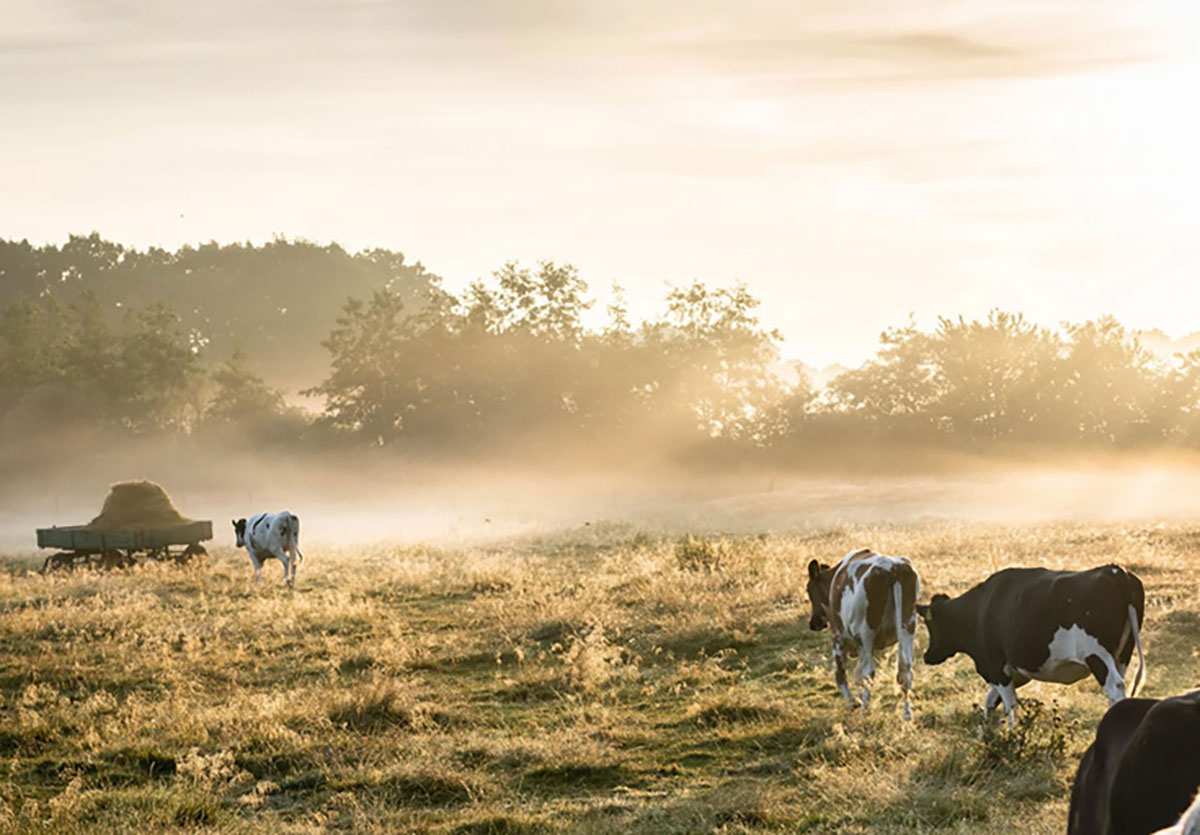
What’s the Difference Between Grass-Fed and Grain-Fed Beef?
Grass-fed, grass-finished, grain-fed, pasture-raised, and the list goes on. Meat eaters have been hit with a bunch of new terms – which can be cryptic and even deceitful.
Traditionally, calves live a similar life. They’re born in spring, they initially drink milk from their mothers; and let’s not forget, cow’s milk was originally made for cows… Not humans! Calves are also left to roam freely and eat grass from their environment and can forage on local roughage. So early life for grass and grain-fed cows is nearly identical. The dissimilarity commences a year later.
Subsequently, the grain-fed calves are raised as conventional cows and are thereby moved to feedlots. Thus, they are kept in confined spaces and are rapidly fattened with grain-based feeds made from soy, corn and other cereal. Farmers plump the cows with this diet to increase the meat yield as well as the intramuscular marbling based on the customer’s desire.
‘You are what you eat’ is applicable to humans and to cows too… In other words, what cows are being fed have a direct effect on the composition of their beef. Grass-fed beef, by definition, is beef from cattle raised solely on grass, pasture or other forages. Grain-fed beef, sometimes called conventional, by definition, is cattle finished on a grain-based diet. In all events, and on a side note, whether the cattle are grass-fed, or grain-fed doesn’t tell you anything about it being organic!
Different feeds deliver different products with different tastes. Diet influences the flavor and the biochemical richness of foods. When it comes to tenderness, grain-fed is the winner. When it comes to fat, it is the same – unfortunately for us, health doesn’t equate to taste.
In the case of grass-fed cows, the rumen, or the cow’s first of several stomachs, extracts nutrition from the grass that they can use, thus creating more energy for meet eaters and increasing the bio-availability of minerals extracted from the soil. Grass-fed beef contains higher levels of beta carotene (vitamin A), vitamin E and vitamin C. Grass-fed meat is loaded with vitamin K2, the missing nutrient that removes calcium from the blood. If you are a meet eater and worried about hormones in your food, stick to grass-fed meat that is not treated with hormones and/or antibiotics.
Generally, grass-fed beef contains less total fat than grain-fed beef, which is also reflected on the calorie composition. Grass-fed beef contains much less monounsaturated fat but are five times higher in Omega 3 than grain-fed beef. Additionally, grass-fed beef contains Conjugated Linoleic Acid (CLA), which is an Omega 6 fatty acid; considered nature’s wonder.
CLA may:
-
protect against metastatic breast tumors,
-
reduce body fat,
-
delay onset of Type 2 Diabetes, and insulin sensitivity,
-
improve mineralization of bones, and
-
modulate the immune system.
The spread of the heart disease epidemic started around 1920-1930 and is currently the world’s leading cause of death. During that time, it was widespread that foods like butter, meat and eggs were to blame for the heart problems, due to their higher ratio of saturated fat and cholesterol. However, as consumption of traditional foods like butter dipped, diseases like heart disease, obesity and type 2 Diabetes were still skyrocketing.
The truth is, saturated fat is not the devil it was made out to be, and butter was being falsely demonized. The whole saturated fat, cholesterol and heart disease myth, has been thoroughly debunked.
The ‘harmful’ effect of saturated fat is the cornerstone of modern dietary guidelines. The link between saturated fat and heart disease has been studied for years, and still scientists are not able to link the two factors statistically. In The Women’s Health Initiative, which was one of the biggest nutritional studies done in history (over 47,000 participants), women were instructed to eat a low-fat diet. Eight years later, there was zero difference in heart disease, cancer or death and there was ONLY 0.5 kg difference in weight. When looking at the literature, when low-fat diet is compared to other diets (paleo, vegan, low-carb and Mediterranean) the low-fat hits the bottom of the list!
When it comes to the environment, grass-fed is clearly the winner. Cattle that roam freely and graze can increase the carbon-carrying capacity of the soil by restoring nutrients, while mono-culture crops (including corn and soybeans), destroy topsoil and increase greenhouse gases. Research now shows that traditional grass-based meat production is benefiting the environment overall by decreasing greenhouse gas emissions, increasing biodiversity of pasture ecosystems and improving quality of run-off water from well-managed pastures.
As a result, grass-fed cows, which are NOT treated without hormones and antibiotics, have higher amounts of nutrients and healthy fats. Grain-fed cows, on the other hand, lead a stressed life. Just like humans, when a cow gets stressed, it produces the hormone cortisol. When cortisol is produced, the cow gets bigger and produces a tougher and fatty meat.
If you’ve been eating grain-fed beef for most of your life, you may feel confused. Don’t worry, with the growing awareness of what is going onto our dinner plates, the demand for grass-fed, free-range beef is now on the rise, which increases its bio-availability for you, the educated consumer!
Our recommendation for clients who eat meat, is to buy grass-fed versions of animal products, support local farmers, help the environment, and vote to help ensure cows are raised humanely.
©2025 Grace El Tayar